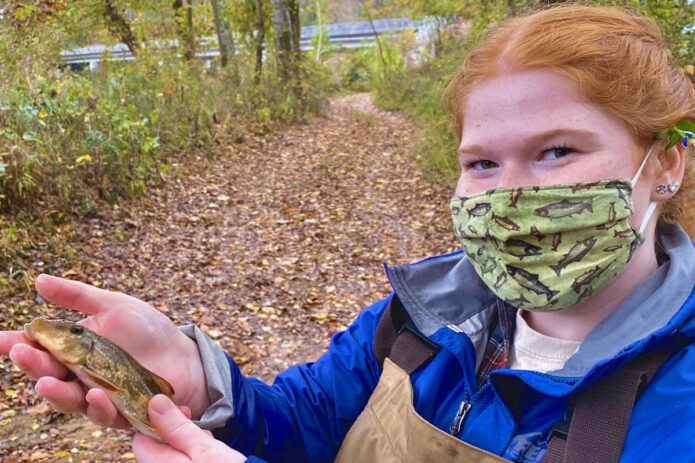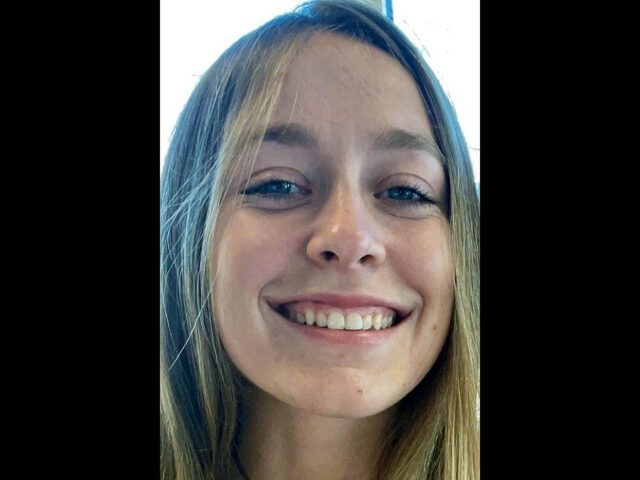 Clarksville, TN – Several graduate and undergraduate biology students from Austin Peay State University (APSU) will present at the Southeastern Fishes Council meeting on November 18th-19th, 2021, in Columbus, Georgia.
Clarksville, TN – Several graduate and undergraduate biology students from Austin Peay State University (APSU) will present at the Southeastern Fishes Council meeting on November 18th-19th, 2021, in Columbus, Georgia.
“One of the reasons we love this meeting is because it is a very student-centric group,” said Dr. Rebecca Blanton Johansen, who attends the meeting each year with APSU students and fellow biology professor Dr. Mollie F. Cashner. “There are great opportunities for students to interact with professionals in the field beyond their presentations to build collaborations and identify resources/funding or future advisers.”
Johansen – also a principal investigator for the Center of Excellence for Field Biology at Austin Peay State University – said her students have made connections through their presentations at the meeting that have led to graduate school positions at universities like Arkansas State, Auburn and Southeastern Louisiana.
Nastasia Disotell, who is pursuing a Master of Science in Biology at Austin Peay State University, first presented at the meeting as an undergraduate in 2017 and now sees the annual gathering like a family reunion.
“I am most looking forward to having the opportunity of presenting my master’s thesis research to a crowd that has seen me since I was an undergraduate,” she said. “It will be such an honor to demonstrate how far I’ve come in my academic career.”
River Watson, who also is pursuing an M.S. in Biology at Austin Peay State University, will attend the meeting for the fifth time.
“I love to see everyone and hear about what they’re up to now and how their research has evolved since I last saw them,” she said.
Six APSU students (listed below) plan to present at the meeting. The meeting’s program has much fuller explanations of the research they’re doing.
All of the students cited their experiences with fellow students and biology professors.
“My best experiences at Austin Peay have been getting to work with some of the incredible faculty we have here in the Department of Biology and at the Center for Field Excellence in Biology, as well as meeting all of the other graduate students with really varied interests,” said Jacob Barrett, who is pursuing a Master of Science in Biology at APSU.
“I feel challenged to learn and expand my skill set every day, and I think it’s mostly due to the incredible faculty, researchers and students we have here,” Barrett stated.
River Watson

- Hometown: Central Arkansas. Pursuing a Master of Science in Biology.
- Research: Her research centers on the federally threatened Kentucky arrow darter, found only in eastern Kentucky. The title of the poster is “Effects of land use and instream barriers on population connectivity of the Kentucky Arrow Darter.” She’s working with Alexis Culley (see below), Johansen, Matthew R. Thomas and Stephanie L. Brandt of the Kentucky Department of Fish and Wildlife Resources, and Michael Floyd of the U.S. Fish and Wildlife Service.
- Quote: “I hope that with the results of my study, we can determine why the species isn’t doing too well in the Daniel Boone National Forest even though it’s a protected area.”
- What’s next?: She wants to pursue a Ph.D. doing fish research.
Alexis Culley

- Hometown: Louisa, Virginia. Pursuing a Master of Science in Biology.
- Research: Like Watson, Culley’s research focuses on the Kentucky arrow darter, specifically examining how surface mining affects the fish and how genetic diversity has changed over the past five years. The title of the poster is “The effects of surface mining on population connectivity and genetic diversity of Etheostoma sagitta spilotum, the Kentucky Arrow Darter.” She’s working with Watson, Thomas, Brandt, Floyd and Johansen.
- Quote: “I will also use resistance models to see how genetic diversity and population connectivity may be related to mining. This research will help guide future conservation efforts for the Kentucky arrow darter.”
- What’s next?: She hopes to earn a Ph.D. focused on imperiled freshwater fish.

Nastasia Disotell

- Hometown: Babenhausen, Germany. Pursuing a Master of Science in Biology.
- Quote: “My best experiences at Austin Peay have been going out and assisting with a diverse group of other researchers in my cohort. I will never forget the memories I’ve made on field outings and the friendships that have come from those adventures.”
- Research: She is researching the complex allopaternal care behavior of egg-mimic darters. She will talk about her master’s thesis research titled “Parentage assessment of the Egg-mimic Darter (Percidae: Etheostoma pseudovulatum) demonstrates complex allopaternal care behavior.” She’s working with Zachary L. Wolf, Cashner and Johansen.
- What’s next?: Pursuing a doctoral degree.
Julie Kastanis

- Hometown: Cleveland, Ohio. Pursuing a Master of Science in Biology.
- Quote: “I’m looking forward to talking about my research findings with other biologists and engaging in conversations relating to my poster talk.”
- Research: She’s investigating if red and yellow coloration in the southern redbelly dace indicates (can be an honest signal of) overall fish health. The poster is titled “Is red coloration in Chrosomus erythrogaster an honest signal?” She’s working with Cashner.
- What’s next?: Collecting southern redbelly dace for an additional breeding season to continue her research.
Jacob Barrett

- Hometown: St. Paul, Minnesota. Pursuing a Master of Science in Biology.
- Quote: “I’m most looking forward to meeting other animal behaviorists who might be able to give me insights regarding the behaviors we’re observing with this species, as well as how personality might operate in stream communities more generally.”
- Research: He’s investigating if creek chub have personalities, or if individual fish are consistently different in terms of their behavior. The poster is titled “Personality traits and colonization decisions by the Creek Chub (Semotilus atromaculatus). He’s working with Cashner.
- What’s next?: He plans to pursue a career in natural resource management for state or federal agencies but also is considering a Ph.D.
Matthew Scott

- Hometown: Goodlettsville, Tennessee. Pursuing a Bachelor of Science in Biology at Austin Peay.
- Quote: “I am excited to go to my first scientific convention and to learn about work being done by my peers in the field of ichthyology.”
- Research: He’s comparing the genetic diversity of the federally endangered tuxedo darter and the common bluebreast darter in the Big South Fork Cumberland River. The title of the poster is “Comparative population genetics of a rare, imperiled and a common, non-imperiled darter from the Big South Fork Cumberland River.” He’s working with Jacob F. Brumley, Abigail Etherton and Johansen.
- What’s next?: Graduate school and a career in environmental research and conservation.



